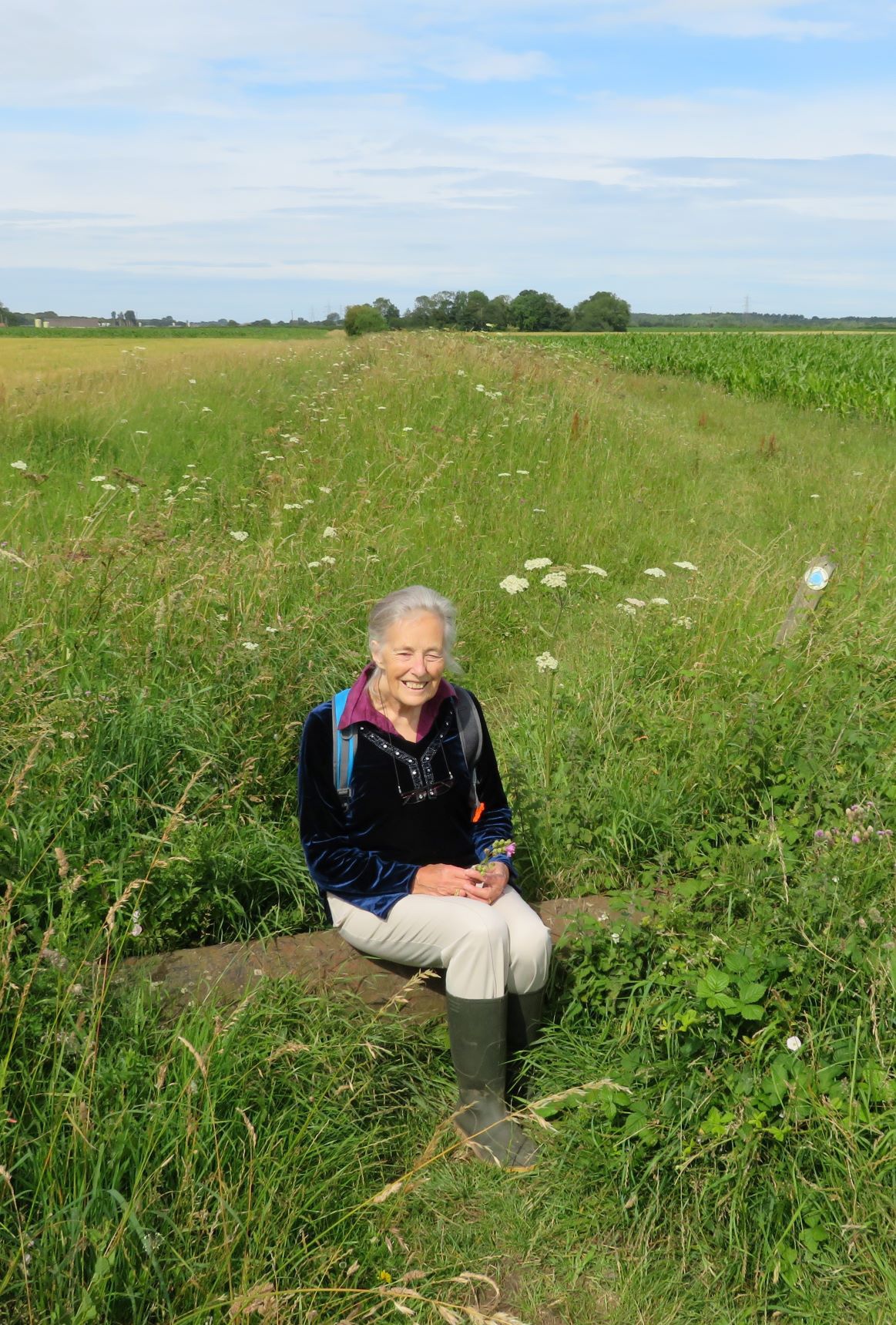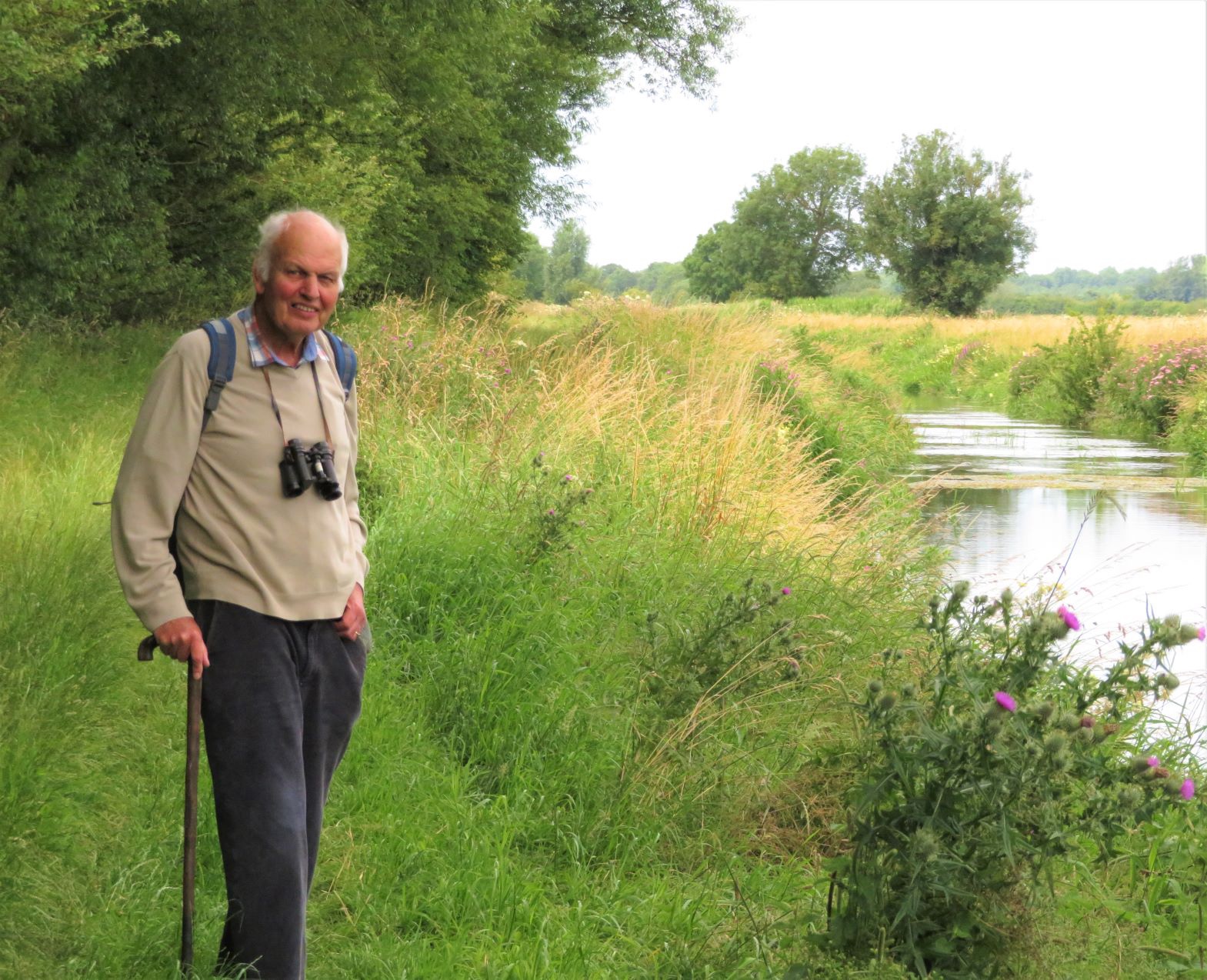
John and Margaret Cooper’s Pentney to King’s Lynn ‘safari’ 13 – 15 July 2020.
A report on our walk – and the natural history that we saw – for the FFON Armchair Naturalist website: https://thefrightenedfaceofnature.com/
Part 1.
Last month we decided, as a break from our fifteen-week Covid-19 “lockdown”, to explore the River Nar on part of its route through Norfolk to the coastal town of King’s Lynn.

We have long harboured the romantic notion of walking along the River Nar from our home in Pentney to our office close to its confluence with the Great Ouse in King’s Lynn. There is a sketch of the old boats on the River at the Southgate (http://www.thewalks.uk/south-gate/) and we thought we might get a sense of their journey as they carried goods (not to mention whale bones) inland.
We made our trip, both there and back, on foot. We do not currently own a car – we prefer to put the money towards our ongoing voluntary work in East Africa. Neither did we want to use public transport as (being in our mid-70s) we were still self-isolating to protect ourselves and the National Health Service (NHS).
We shall recount our story on the Frightened Face of Nature (FFON) website run by Simon King as part of our joint Armchair Naturalist blog and podcast https://thefrightenedfaceofnature.com/ . It will come in three parts, no surprise perhaps when we confess at this stage that our walk to King’s Lynn took 13 hours and the return journey 11 hours. All will be revealed later but suffice it to mention now, discreetly, a few key words –over-optimism, under-estimation, “linger and look”, trudge and dogged determination! {MEC}.
The River Nar is a tributary of the River Great Ouse. It rises from springs on the chalk near Tittleshall. It then flows 42 kilometres (26 miles) west through Castle Acre and Narborough, passing close to the village of Pentney, where we were staying during the Covid lockdown, and where we set off on our trip.
The river was used to power a number of mills over the centuries and the remains of five are still visible along its length. As a result of an Act of Parliament in 1751 the Nar was made navigable from Narborough, and probably West Acre, to its mouth in King’s Lynn. This use of the river as a trading route declined rapidly after the opening of a railway from King’s Lynn to Dereham in the mid-19th century.
Here is an account of our “King’s Lynn Safari”. We have referred in places (in inverted commas, in italics) to entries in John’s Diary (journal), which he has kept since 1955. He made notes in this during the hike but could write very little at the times when it was raining and we could find no shelter.

We have refrained from including too many scientific names except where these are particularly relevant.
We left the village of Pentney at 09.21 and walked towards the river through mixed farmland. It was sunny and we saw various butterflies, including an unusually coloured hedge brown (Pyronia tithonus) – a male with no orange coloration on its wings and a background colour similar to that of a ringlet. Richard South’s seminal work “The Butterflies of the British Isles” (1906, reprinted many times) describes various “colour changes” and “aberrations” in this species; alas, we could not get a good photo of it.
We noted many soldier beetles on plants and found muntjac tracks in mud. We heard a buzzard mewing.
John wrote: “Skylarks singing, and two others, one scurrying along edge of barley, the other flying up and down as it crossed in front of us”.
We dallied over photographs which offered John’s arthritic knee some rest, and delighted in the varied summer flowers on the edge of the fields of barley until we reached the river.
Margaret likes to describe this first stage as “linger and look”, the phrases she used as a take-home message in one of our FFON podcasts, exhorting listeners to spend time enjoying Nature – we truly “lingered and looked” – with consequences later in the day.
The surrounding land is low-lying and the Nar is carefully contained between high banks. Some of course has been re-routed over the years, which seems to account for some very dull patches.
Once on the bank, the first stretch was excellent for flowers, insects and birds with just a last, rather boring, part through corn. At one point there was evidence of earlier spraying, possibly with the controversial weed-killer glyphosate.
John listed in his diary various grasses, Persicaria, mayweed and poppies in a barley field, dewberry with both flowers and fruit, sloes, small acorns, an unidentified vetch, large and small bindweed, ragwort, goat’s beard with seeds, and meadowsweet.
We reached the Nar at 11.23 at a point where there is a sluice and a weir. We watched a female brimstone butterfly sharing a knapweed flowerhead with a honey bee, the latter’s pollen baskets full.

We sat on the river bank, where we were soon joined by a large, impressive, but rather dominant, male (cob) mute swan. We watched him swim towards us, emerge, and determinedly wave his neck sideways to and fro at us until we eventually realised that we were sitting on his personal walking route around the weir to the river above. We made way and he allowed us to take some photos.{Figure}.

We then walked along the river as it flowed west. The first stretch was full of life, much enhanced by the bright sunshine. At one point John wrote “12.12 sitting on bank. “River is a delight – reeds, damselflies and dragonflies”. There was purple loosestrife and hempagrimony in clumps along the bank, burdock with prickly heads (burrs), scabious, sorrelwith its seeds turning brown and bright red leaves, seed heads of hogweed, cinquefoil, scarlet pimpernel and an unidentified blue speedwell.
We were delighted to encounter tufted ducks -two families (one female plus seven chicks and the other a female with four). The young were still fluffy and clinging close to the mother as they swam behind her [Figure]. John subsequently noticed, in one of the photos, that the second of the two female ducks had an opacity of an eye, probably the result of an injury.

On the opposite bank two young swans were busily preening while a parent stood on guard, her reflection shimmering in the clear running water below [Figure]. We heard a couple of “plops” and hoped these might be water voles– see later. Additional plants for our list were musk mallow, great willow-herb, creeping thistle, woundwort, great reed mace and yellow water lilies.

We heard a warbler singing and a chiff-chaff calling.
We had repeated sightings of several species of butterfly including red admiral, unidentified blue, browns (satyrids), both large and small skippers [Figure], peacocks, many ringlets and large and small whites.

Cinnabar caterpillars were abundant on ragwort and we also found a “woolly bear” (larva of a cream-spot tiger moth) {Figure}. Margaret pointed out young meadow grasshoppers, disturbed as we walked.

Margaret also spotted a group of small birds in a tree on the opposite bank; when viewed with binoculars these proved to be long-tailed tits.

We passed and greeted occasional people with dogs but otherwise we had only ourselves and the wildlife for company.


There were dragonflies, damselflies and hoverflies in abundance {Figure}.

Our favourite damselfly, of which we saw many throughout the walk, even in the rain, is the banded agrion (Calopteryx splendens). This is a large species, with a total length of up to 48 millimetres. The male has translucent wings each of which bears a broad, dark iridescent blue-black band. The female banded agrion has translucent, pale green, iridescent wings with a white patch near the tip and a metallic green or bronze/green body. The banded agrion is generally found along slow-flowing streams and rivers.
The word “agrion” is interesting. It was originally coined by Fabricius for most dragonflies. It comes from Ancient Greek ἄγριος (agrios) meaning “wild, living in open fields”, and reflects the ability of so many of the Odonata to fly and hunt away from water.
Other insects were less visually attractive (or conspicuous) but no less important in terms of species richness and biodiversity. Clouds of non-biting midges (Chironomidae) regaled us at one point. Individual biting flies (Tabanidae), “horseflies”, “gadflies”,“clegflies”, appeared from nowhere and took the opportunity to bite us – a pleasant changefor them, perhaps, from their usual fare of cattle (ox), horse or deer blood.
Horseflies are notoriously difficult to capture as one is only aware of their presence once they have bitten and are about to draw blood. One fly was caught and killed, with relunctance, by John for identification when we got home. It proved to be in the genus Haematopota and was almost certainly “H. pluvialis”. Colyer (1951) wrote about this genus in his book “Flies of the British Isles” and commented “Haematopota are common from May to September; in fact too common on occasion for the peace of mind of the field naturalist”.
At 13.30 we decided to stop for our picnic lunch. We found a relatively secluded spot to sit down on the river bank by a wooden bridge. A gentle wind blew in the reedsopposite and there were small fish in the clear water beneath us (possibly roach, but we couldn’t see the colour of their fins).
Looking around after a while, we realised that the adjacent footpath that crossed the bridgeled to Pentney Abbey, across the fields opposite. It dawned upon us that we had clearly not gone too far as the crow flies from the place where we started our journey! As our notes say, rather reassuringly “We took the long route but it was lovely”. That initial lap, on our first morning, was certainly the best part of the whole two-day journey as far as natural history sightings were concerned.
On this first stage of our walk, on such a delightful stretch of river, with the sun shining, we felt (and looked – see Figures) keen and optimistic, and John’s arthritic knee was only an irritation – but we were aware that we had taken time to “linger and look” and still had several hours’ walking ahead of us.
More to follow, in Part 2.
John and Margaret Cooper 21st August 2020







One response to “The Nar Valley in Norfolk – A foot safari during the Covid lockdown.”
Ulikwenda safari mzuri sana kabisa. Nimejifunza sasa, mahali Norfolk porini.
LikeLiked by 1 person